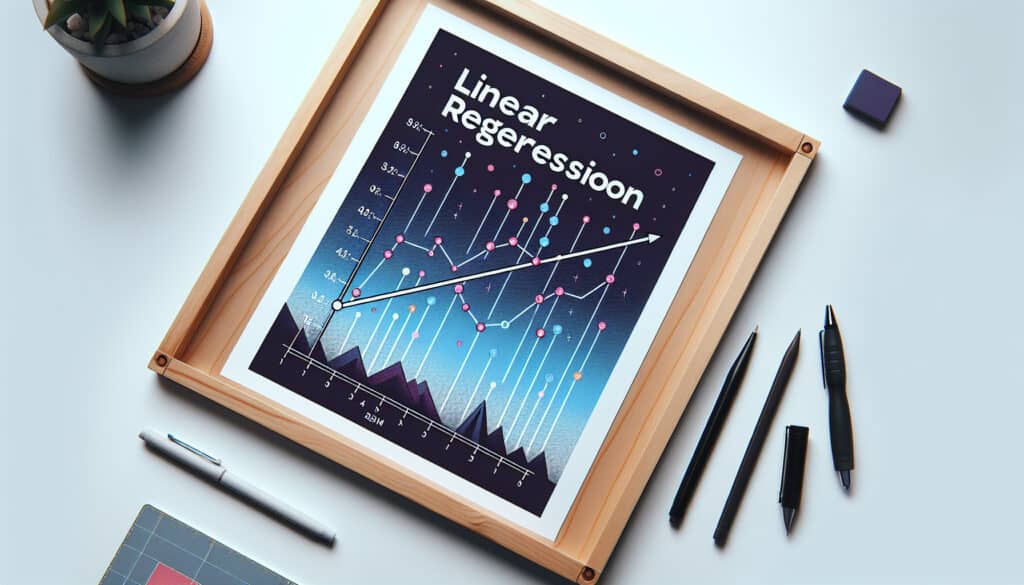Modelizar la relación entre una variable dependiente y una o varias variables independientes.
- Metodologías: Economía, Lean Sigma, Fabricación, Resolución de problemas, Calidad
Regresión lineal

Regresión lineal
- Aprendizaje automático, Algoritmos de mantenimiento predictivo, Mejora de procesos, Control de calidad, Gestión de calidad, Análisis estadístico, Control estadístico de procesos (CEP)
Objetivo:
Cómo se utiliza:
- Se utiliza para predecir un resultado o pronosticar valores futuros basándose en datos históricos. En fabricación, puede utilizarse para predecir fallos de equipos basándose en las condiciones de funcionamiento. En marketing, puede predecir las ventas basándose en el gasto en publicidad.
Ventajas
- Fácil de entender y aplicar; Proporciona una relación clara y cuantificable entre variables.
Contras
- Supone una relación lineal entre las variables, lo que puede no ser siempre el caso; Sensible a los valores atípicos.
Categorías:
- Economía, Ingeniería, Calidad
Ideal para:
- Prever las ventas, predecir la demanda de productos o identificar los factores que influyen en la calidad de la producción.
La regresión lineal puede aprovecharse eficazmente en varias fases del diseño y desarrollo de productos, sobre todo durante las etapas de análisis y prueba, cuando se exploran las relaciones históricas entre variables. En la industria del automóvil, por ejemplo, la regresión lineal ayuda a prever las necesidades de mantenimiento analizando los datos de reparaciones anteriores en función de variables como el kilometraje medio del vehículo y las condiciones de conducción. En el ámbito del desarrollo de software, esta metodología puede utilizarse para predecir los niveles de compromiso de los usuarios basándose en patrones de uso anteriores y en los esfuerzos de marketing, lo que permite a los equipos tomar decisiones basadas en datos sobre las mejoras de las funciones. En el sector farmacéutico, sirve como herramienta analítica para comprender la correlación entre los niveles de dosificación y las respuestas en los ensayos clínicos, lo que puede optimizar las fórmulas de los productos. Las partes interesadas, como analistas de datos, gestores de proyectos y equipos de marketing, suelen iniciar y utilizar la regresión lineal en entornos de colaboración, en los que el software estadístico puede ayudar a gestionar conjuntos de datos. La claridad y la facilidad de interpretación de los resultados de la regresión lineal permiten a los equipos comunicar las conclusiones con eficacia, fomentando así la toma de decisiones informadas en los diferentes departamentos, desde I+D hasta ventas y logística, garantizando un enfoque más alineado para satisfacer las demandas del mercado y mejorar la calidad del producto.
Pasos clave de esta metodología
- Identifique las variables dependientes e independientes relevantes para la predicción.
- Formular la ecuación de regresión lineal a partir de las variables establecidas.
- Ajuste el modelo a los datos históricos utilizando un método como el de mínimos cuadrados.
- Evalúe el ajuste del modelo utilizando parámetros como R-cuadrado y p-valores.
- Evalúe la aleatoriedad y normalidad de los residuos para garantizar la validez del modelo.
- Utilizar el modelo validado para hacer predicciones sobre datos nuevos o futuros.
- Actualizar periódicamente el modelo con nuevos datos para mejorar su precisión con el paso del tiempo.
Consejos profesionales
- Actualice periódicamente su modelo de regresión lineal con nuevos datos para captar las tendencias cambiantes y mantener la precisión en las predicciones.
- Utilice términos de interacción en su modelo de regresión para explorar las relaciones entre variables que podrían no ser lineales, revelando conocimientos más profundos.
- Implemente la validación cruzada k-fold para evaluar la solidez de su modelo y evitar el sobreajuste, garantizando previsiones fiables en escenarios variados.
Leer y comparar varias metodologías, recomendamos el
> Amplio repositorio de metodologías <
junto con otras más de 400 metodologías.
Sus comentarios sobre esta metodología o información adicional son bienvenidos en la dirección sección de comentarios ↓ , así como cualquier idea o enlace relacionado con la ingeniería.
Contexto histórico
1949
1950
1950
1960
1960
1960
1960
1940
1950
1950
1958
1960
1960
1960
1960
(si se desconoce la fecha o no es relevante, por ejemplo "mecánica de fluidos", se ofrece una estimación redondeada de su notable aparición)















Publicaciones relacionadas
Simulación de Monte Carlo
Pruebas basadas en modelos
Comprobación de modelos
Investigación con métodos mixtos
A prueba de errores (Poka-Yoke)
Pruebas del perfil de la misión